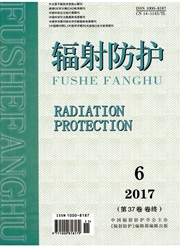

 中文摘要:
中文摘要:
为研究放射性元素固化介质备选矿物榍石随地质年代的结构演化及稳定性,以山西凤凰山花岗岩中的副矿物榍石(~1758Ma)为研究对象,利用偏反多功能显微镜观察其形貌特征;用X射线衍射仪进行物象结构分析;使用配有自动伸缩型能谱仪探头的扫描电子显微镜对榍石样品进行扫描和能谱分析。结果表明:凤凰山岩浆岩产出的榍石经过约1758Ma的地质演化,其晶胞参数发生了变化,变化的主要原因是由于晶体内部残存应力及多种杂质元素侵入发生类质同像作用共同所致;凤凰山岩浆岩中榍石经过长期的地质演化,虽然晶胞参数发生变化,但其晶体结构依然完整,并且具有较高的结晶度。
 英文摘要:
英文摘要:
In order to investigate the structural evolvement and stabihty of sphen as condensate of radioelements, the sphenes ( - 1 758 Ma) were studied as investigated object, which were collected from magmagranite of Fenghuang Mountain in Shanxi Province. The exterior characters of sphenes were observed with the help of a muitifimctional microscope. Furthermore, X-ray diffraction (XRD), energy dispersive spectroscopy (EDS) and scanning electron microscope (SEM) methods were conducted for the research on sphenes. The resuits indicated that sphenes collected from Fenghuang Mountain had undergone geological evolvement, and many crystal parameters of sphenes had changed. The remained stress and the impurity elements in interior of crystals were the main reasons for phenomenon. Though sphenes had undergone about 1 758 Ma geological evolvement, the structra'e of sphenes still remains integral and crystallinity is high.
 同期刊论文项目
同期刊论文项目
 同项目期刊论文
同项目期刊论文
 期刊信息
期刊信息
